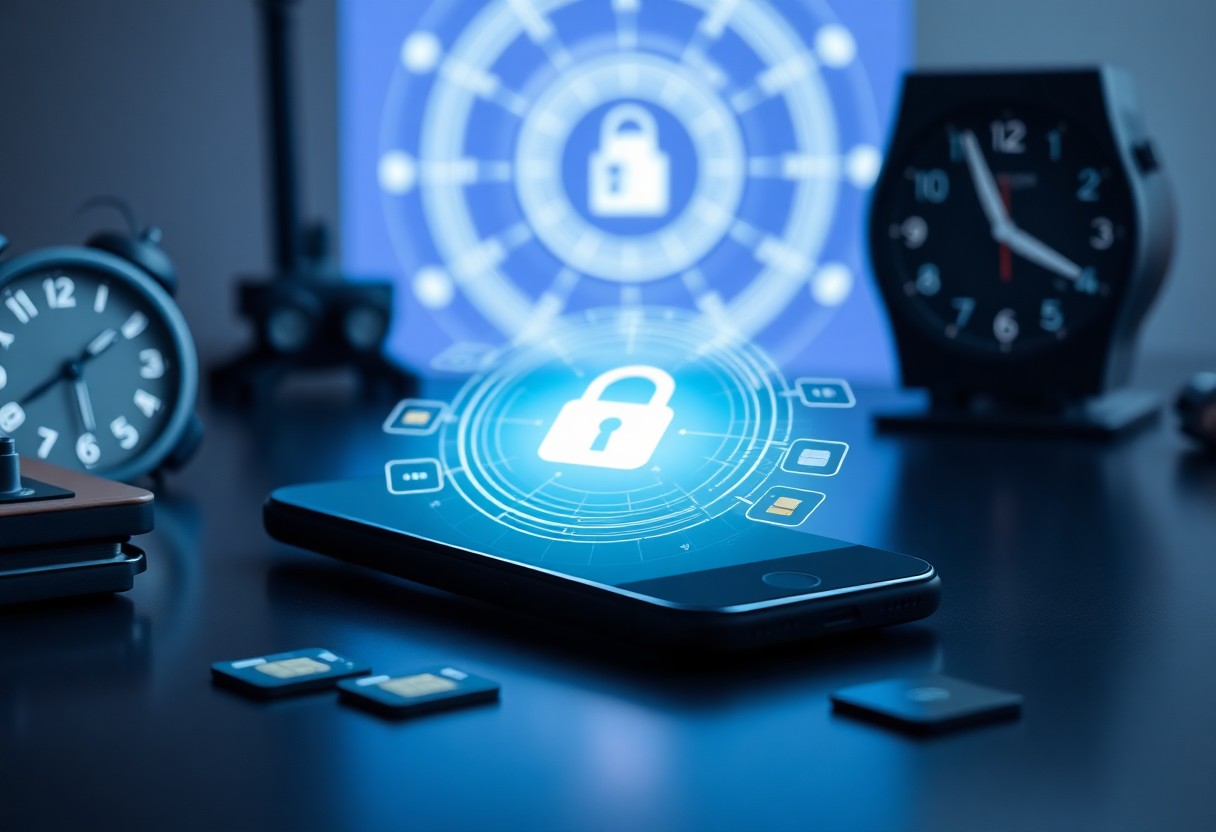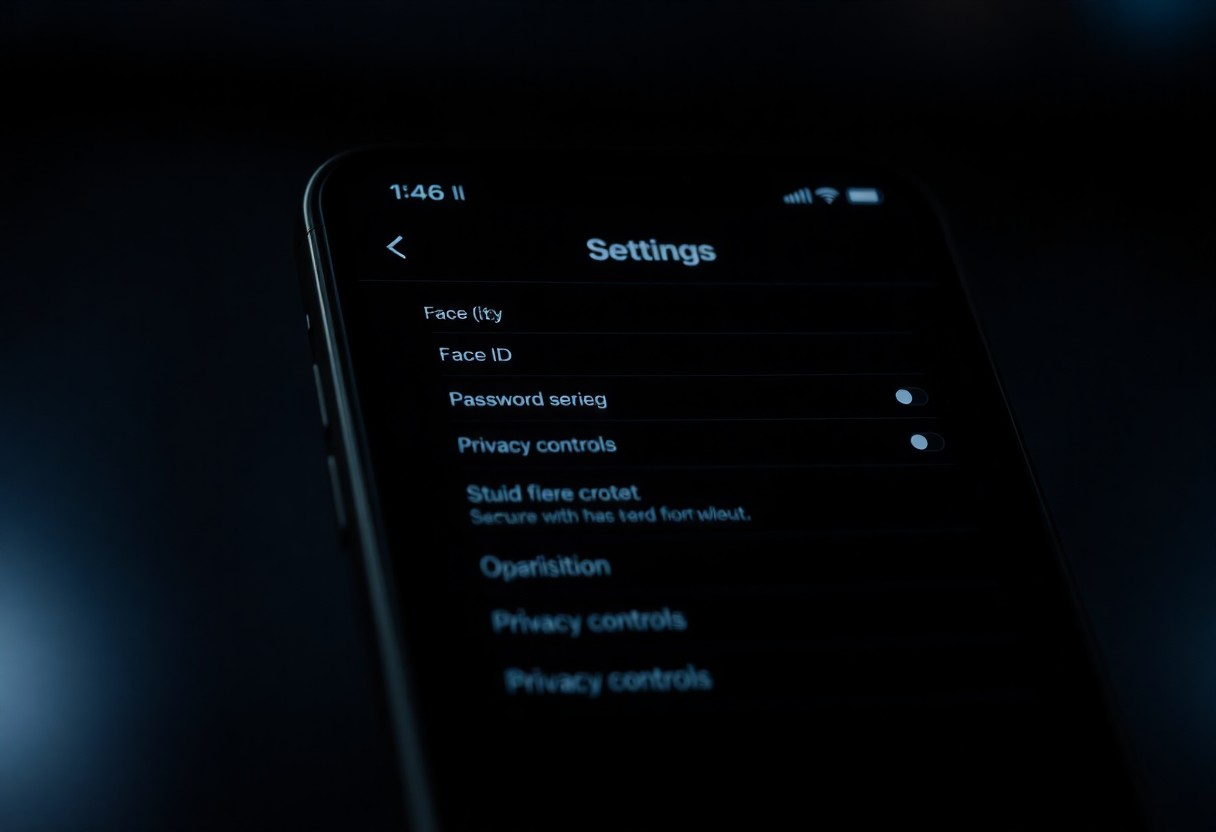You must take steps to protect your mobile number from threats like SIM swaps, which can lead to identity theft and financial loss. With the emergence of eSIM technology, you have more control and security over your mobile identity. This post will guide you through necessary defensive measures to safeguard your number, enhance your privacy, and secure your sensitive information against unauthorized access.
Key Takeaways:
- eSIM technology offers enhanced security features, making it harder for unauthorized access to mobile numbers.
- Implementing strong authentication methods can reduce the risk of SIM-swapping attacks significantly.
- Regularly monitor account activity and set up carrier alerts to detect unusual behavior quickly.
The Rising Threat of SIM-Swap Attacks
SIM-swap attacks continue to grow in frequency and sophistication, making your mobile number a prized target for cybercriminals. These attacks exploit vulnerabilities within cellular networks and often lead to unauthorized access to sensitive accounts, turning your phone into an entry point for identity theft and financial fraud. As online services increasingly use your mobile number for two-factor authentication, the stakes are higher than ever, as a compromised number can lead to devastating repercussions.
Anatomy of a SIM-Swap Attack
A SIM-swap attack typically begins with an attacker gathering personal information about you, often through social engineering techniques or data breaches. After acquiring enough details to convince your mobile carrier, the attacker requests your phone number to be transferred to a new SIM card under their control. Once completed, the attacker can intercept text messages, calls, and authentication codes, giving them unimpeded access to your accounts.
Impact on Victims: Financial and Emotional Toll
The impact of a SIM-swap attack stretches far beyond financial loss; it can also cause significant emotional distress. Victims frequently experience feelings of violation, anxiety, and helplessness as they navigate the aftermath of stolen identities and drained bank accounts. You might face not only immediate monetary losses, which can reach thousands of dollars, but also prolonged hardships, such as difficulties in restoring your credit and securing your online identity.
Financial losses from SIM-swap attacks can average around $10,000 per victim, with some cases resulting in losses exceeding $1 million. Beyond these figures, the emotional ramifications are profound; victims often report feeling vulnerable and fearful of future attacks, leading to a pervasive sense of insecurity. Rebuilding your financial identity can take months or years, and the mental toll of dealing with fraudulent activities and restoring accounts may leave you drained. Such attacks diminish your trust in technology and your sense of privacy, underscoring the importance of proactive security measures.
The Game-Changer: Exploring eSIM Technology
eSIM technology represents a significant evolution in mobile connectivity, enabling you to switch carriers without needing a physical SIM card. This embedded SIM is integrated directly into your device, allowing for streamlined connectivity and the ability to manage multiple plans from one device. As mobile networks shift towards this innovative standard, you gain flexibility and control over your mobile subscriptions, altering how you engage with telecom services.
How eSIMs Function: A Technical Breakdown
eSIMs operate through programmable digital profiles that are securely stored within your device. Instead of relying on a physical SIM, your device downloads an eSIM profile over-the-air from your carrier, which includes crucial information such as your phone number and account details. This allows you to activate, deactivate, or switch profiles seamlessly, enhancing user experience and flexibility.
Advantages of eSIMs in Enhancing Security
eSIMs inherently improve security by reducing the vulnerabilities associated with traditional SIM cards. With a digital profile embedded in your device, the risk of losing physical SIM cards or having them swapped decreases significantly. Moreover, eSIMs can incorporate additional authentication measures that make unauthorized access exceedingly difficult.
Some carriers even enable features like remote locking of the eSIM profile, allowing you to quickly disable service if your device is lost or stolen. This type of control provides you with the peace of mind that traditional SIMs can’t offer, as managing your connectivity becomes safer and more resilient. The inability for attackers to physically swap out your SIM means you are less likely to fall victim to SIM-swap scams, ultimately securing your sensitive information and enhancing your overall device protection.
Protective Measures for Mobile Numbers
Implementing protective measures for your mobile number can significantly reduce the risk of unauthorized access and attacks. Start by evaluating your current security settings and adopting new practices, such as utilizing advanced authentication methods and keeping your personal information private. Regularly monitor your accounts for suspicious activity and consider notifying your mobile carrier if you suspect any potential threats to your number. Taking proactive steps is vital to maintaining the integrity of your communications.
Enabling Two-Factor Authentication
Two-factor authentication (2FA) adds a critical layer of security to your online accounts by requiring a second form of verification beyond just your password. This may involve a temporary code sent to your mobile device or using an authentication app. By enabling 2FA, you ensure that even if someone has your password, they cannot access your accounts without also having access to your phone.
Utilizing Additional Security Layers
Incorporating additional security layers can further fortify your mobile number’s defenses. Features like biometric authentication, such as fingerprints or facial recognition, offer enhanced protection while securing sensitive applications. You can also leverage phone encryption and assign complex passwords unique to each account to thwart hacking attempts. Utilizing call blocking features and being cautious about sharing your number can also diminish risks associated with phishing and other social engineering attacks.
Employing these additional security layers not only protects your mobile number but also safeguards your personal data. For instance, biometric security has seen adoption as it significantly decreases unauthorized access, with some studies indicating it reduces the risk of hacking attempts by up to 90%. Similarly, unique complexities in passwords make it harder for attackers to breach your accounts, while call blocking features can prevent spam and potential phishing calls. By layering security measures, you create a robust defense system that impedes various attack vectors.
Future Trends: The Evolution of Mobile Security
Anticipating future trends in mobile security reveals an ever-evolving landscape shaped by emerging technologies and user demands. Innovations like artificial intelligence and the Internet of Things (IoT) will enhance security protocols, making mobile devices harder to compromise. You can expect more robust defenses, not only against traditional threats but also against advanced persistent threats (APTs), as companies integrate multi-layered security solutions to safeguard your data.
Emergence of Biometric Verifications
The integration of biometric verification methods, such as fingerprint scanning and facial recognition, is redefining mobile security. These unique identifiers not only offer enhanced protection but also allow for a more user-friendly experience. Expect to see widespread adoption of these technologies, significantly reducing the chances of identity theft and unauthorized access to your mobile accounts.
The Role of Blockchain in Mobile Identity Protection
Blockchain technology is set to revolutionize mobile identity protection by providing a decentralized and tamper-proof method for verifying identity. Utilizing encrypted smart contracts and distributed ledgers, you gain a higher level of control over your personal information. With your identity securely stored, the potential for data breaches diminishes drastically.
Blockchain’s ability to securely authenticate your identity means that sensitive data remains in your hands rather than centralized in a vulnerable database. This technology mitigates the risks of traditional identity theft and fraud, shifting towards a transparent method where you control who accesses your information. Furthermore, with its immutable records, any unauthorized changes to your identity information become nearly impossible, adding another layer of security. By leveraging blockchain, you can bolster your defenses against the rising tide of mobile threats.
Implementing Changes: Your Guide to Enhanced Security
Enhancing your mobile security involves adopting new technologies and practices that directly guard against threats. Prioritizing the transition to an eSIM simplifies mobile management while increasing your security posture. By taking steps now, you can prevent future vulnerabilities associated with physical SIM cards, including theft and unauthorized access.
Steps to Transition to eSIM
Transitioning to eSIM requires several simple steps. First, check if your device supports eSIM technology; most modern smartphones do. Next, contact your carrier to request a digital eSIM profile, which they can usually provide via a QR code. Then, follow your device’s settings to activate the eSIM and subsequently deactivate the physical SIM.
Best Practices for Securing Your Mobile Identity
Securing your mobile identity involves a combination of technology and vigilance. Enable two-factor authentication on your accounts, regularly update passwords, and utilize strong, unique passcodes. Consider restricting personal information shared on social media to limit exposure, and regularly review your privacy settings to mitigate risks.
Focusing on two-factor authentication (2FA) adds an imperative layer to your mobile security. By implementing 2FA, you significantly reduce the chances of unauthorized access even if your password is compromised. Additionally, employing a password manager can help you generate and manage complex passwords for your accounts. Track app permissions and restrict access to only what’s necessary, keeping sensitive data protected. Lastly, stay alert for phishing attempts and suspicious messages that may target your mobile device, as awareness is your best defense against cyber threats.
Final Words
Upon reflecting, securing your mobile number through eSIM and SIM-swap defenses is vital for protecting your personal information and financial assets. By understanding these technologies and implementing appropriate security measures, you can significantly reduce the risk of unauthorized access. Embrace these tools responsibly to maintain control over your communication channels and enhance your overall digital safety. Your vigilance today will go a long way toward safeguarding your future.



